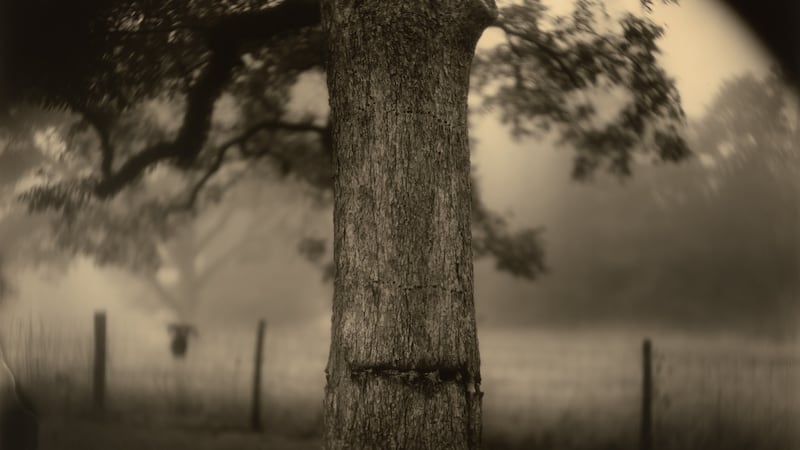At its best, designing modern buildings is an art form – Schelling's "architecture as frozen music" – and Marcel Chassot's Architecture and Photography: Amazement as Visual Culture captures the aesthetic that would render beauty in constructions of concrete, cladding, steel and glass. He works simply enough with a wide-angle lens on a digital camera which yields Euclidean but every-which-way arrangements of verticals and diagonals in striking formations. What you see is a symbiosis of the architect's art that created the buildings in the first place and the photographer's ability to crop, use light and select angles to present them anew.
Chassot photographs structures, train stations, airports and churches to reveal intensities of pure form that their three-dimensional reality sometimes obscures. His eye for shapes and perspectives puts Mario Botta’s religious buildings on a par with Frank Gehry’s Guggenheim Museum, Norman Foster’s Gherkin in London and Zaha Hadid’s highly expressive designs.

Radical journey
Andreas Gursky has a different agenda and his book is a visual chronicle of a radical journey that began the early 1980s. He started with reassuring scenes of everyday human activity – an open-air swimming pool, a local football game – but with his discovery of digital editing there was a sudden change of subject matter. Computer manipulation allowed him to combine multiple shots in composite images that are sharply coloured, post-modern, incredibly detailed but with everything in focus.
Gursky homes in on chromatic and pictorial patterns to graphic effect, manufacturing large-scale photographs of what is pressingly contemporary: an Amazon warehouse; work consoles in a factory; garment workers in Nha Trang; an aerial shot of hundreds of cattle across a vast Colorado expanse, divided into pens, ear tags clearly visible. Only multiple exposures allow for the scale and density of images that choreograph the geometry of corporate capitalism presaged by William Blake with his “charter’d streets”. What is missing in Gursky are the “marks of weakness, marks of woe” but he leaves that for the viewer to fill in for themselves.
Southern gothic
Unlike Gursky, Virginia-born Sally Mann has not strayed from her home turf and, over a 40-plus-year professional life, her photographic signature has remained constant: a southern gothic sensibility imbued with a heavy tincture of romanticism. A Thousand Crossings showcases her achievement and includes work never seen in print before.
Mann's work is haunted by her sense of the body's vulnerability, death's imminence and the temporality of childhood – but this was ignored when photos of her young, unclothed children appeared in Immediate Family (1992); the resulting ruckus was predictable.
The south’s racial history is part of Mann’s consciousness (she named her first child, Emmett, after a black teenager brutally killed in Mississippi) as she belatedly searches for her black nanny who always had to eat separately on family excursions. Unlike Chassot and Gursky, she is more concerned with the ghostly past than a hyper-real future, seeking to preserve memories before history buries them.

Alienated subcultures
Another Kind of Life: Photography on the Margins justifies its title: a powerful collection of photographic work concerned with communities outside society's mainstream, alienated subcultures wildly different from one another in some respects – from the simply poor or homeless to junkies, sexual explorers and taboo-breaking rebels. All are outsiders or outlaws but in clubs with different codes of conduct.
Photographic anthologies risk dilution at the expense of the authenticity that comes from bringing together one artist's oeuvre. For this reason, the scatter-gun approach of themed collections can lack gumption but this is far from the case in Another Kind of Life.
The compelling subject matter subsumes a variety of aesthetic strategies – from portraiture to street photography – and a divergent set of photographers. The artistic vocabulary of each photographer is introduced with a page or two of nonsense-free text from a knowledgeable contributor, priming the reader for the pictures that follow. We see a bungalow camp in early 1960s America, a safe house for cross-dressers who holidayed there; Yakusa gangsters in Tokyo’s seedy underbelly arrested in the flash of Seiji Kurata’s camera; hippies in the USSR; Bruce Davidson’s photos of a dwarf predating Martin McDonagh’s interest by half a century. The images are often disturbing, transgressive, way outside the art world market that is distorting what is meant by the value of photography.
These four books, all published in the first half of this year, show individual photographers directing their camera lens to worlds – some raw and troubling, others refined and futuristic – that they open for us to gaze into.
Architecture and Photography: Amazement as Visual Culture, by Marcel Chassot, is published by Hirmer (£49.99); Andreas Gursky, by Andreas Gursky, is published by Steidl (€34); Sally Mann: A Thousand Crossings, by Sally Mann, is published by the National Gallery of Art, Washington, and the Peabody Essex Museum, Massachusetts, in association with Abrams Books (€29); Another Kind of Life: Photography on the Margins, edited by Alona Pardo, is published by Prestel (€27)



















